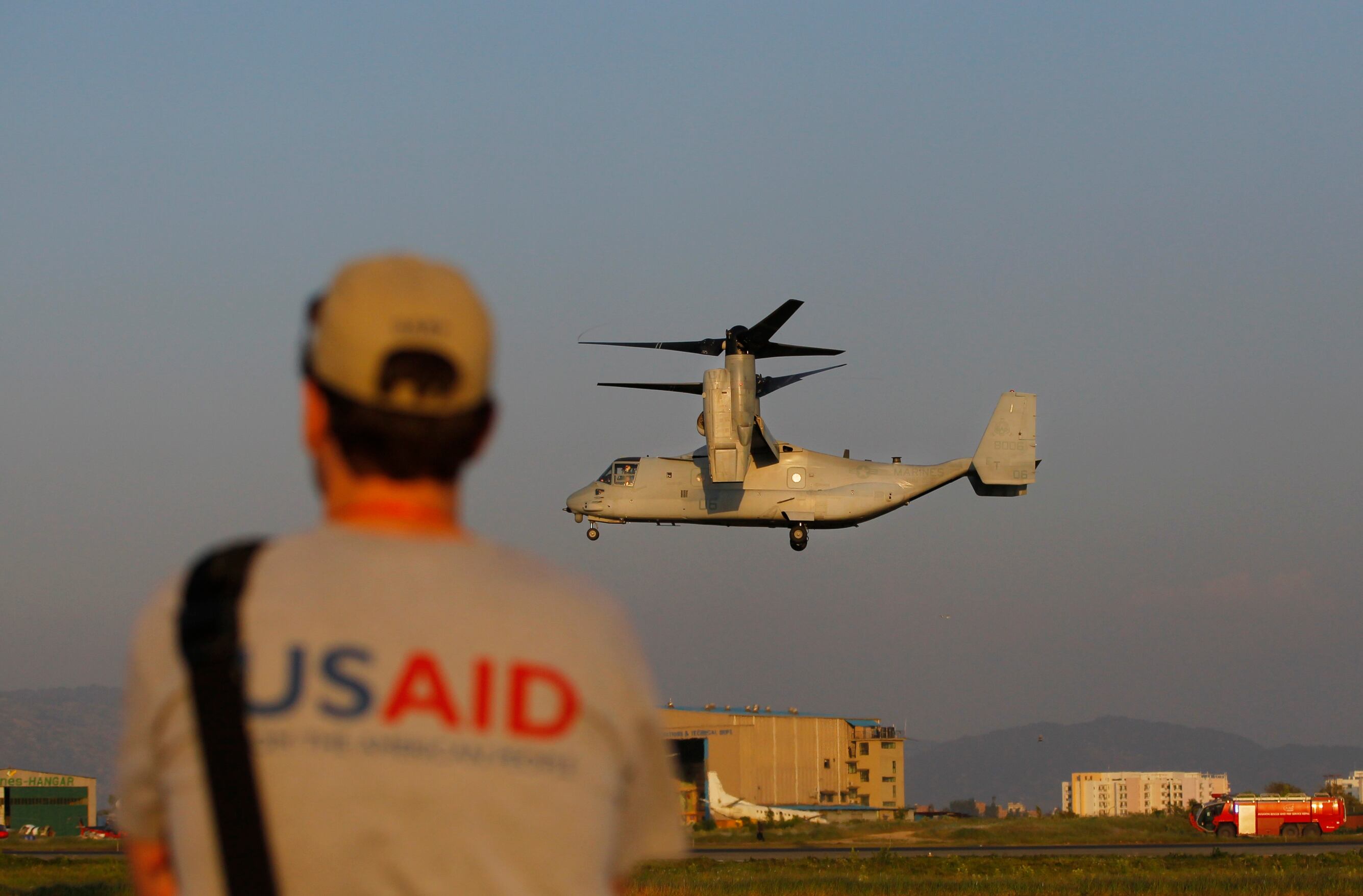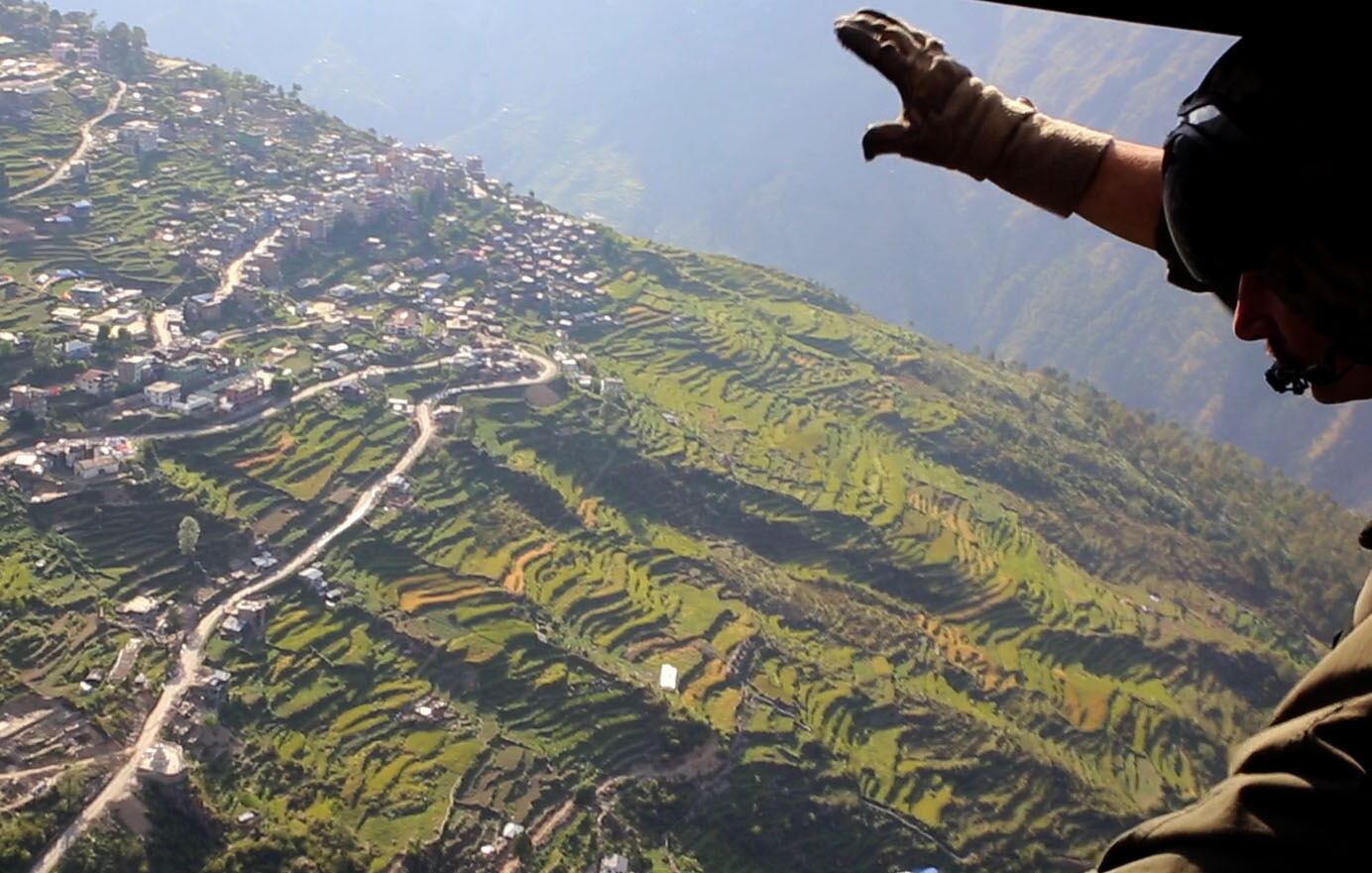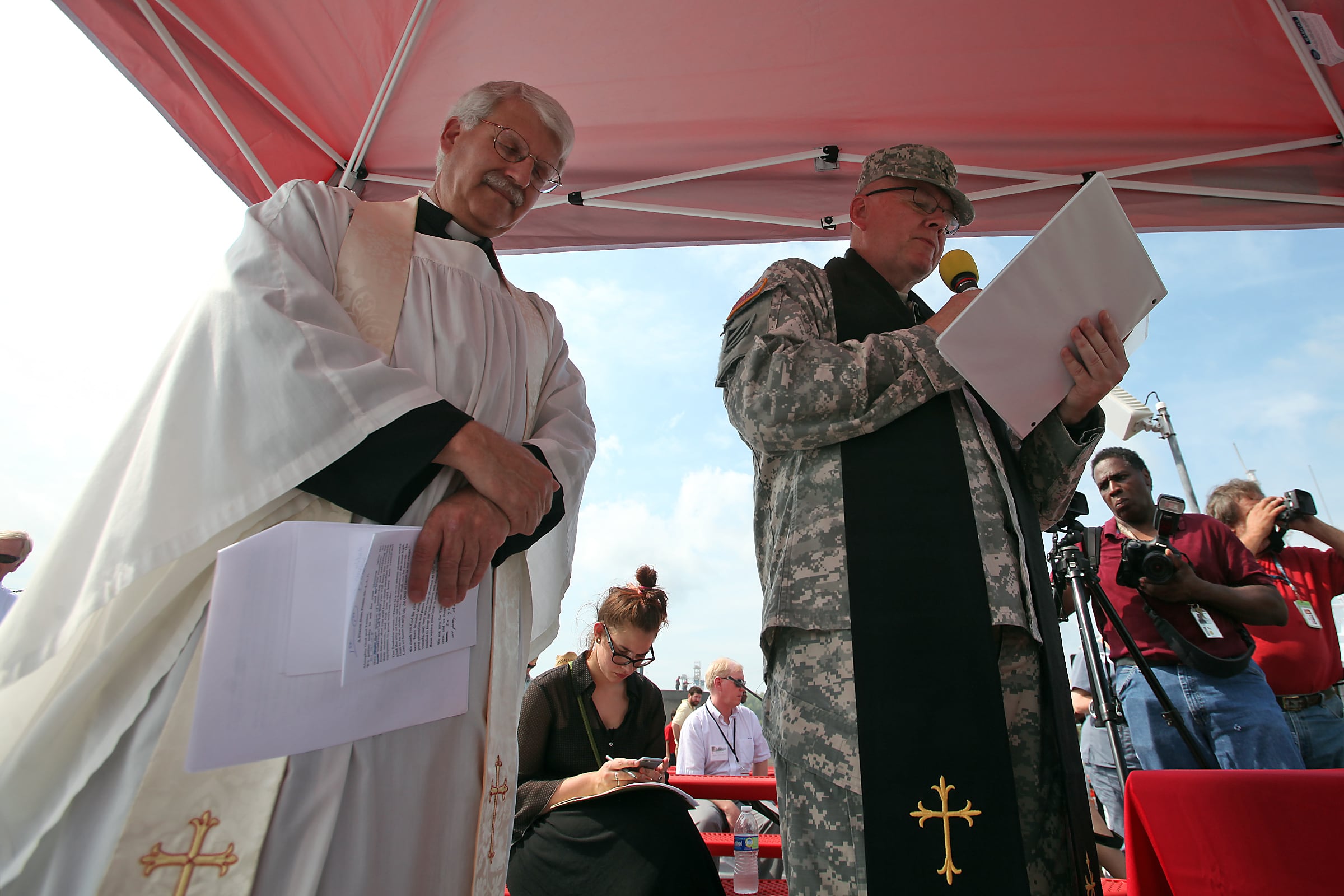As the U.S. military ramps up its humanitarian assistance efforts in Nepal following last month's devastating earthquake there, a Marine Corps leader on the ground is crediting the Nepalese with quickly restoring order in the wake of a horrific disaster.
U.S. Pacific Command announced plans May 6 to place about 500 troops on the ground in Nepal. The joint task force operating out of Kathmandu is led by Marine Lt. Gen. John Wissler, the commanding general of III Marine Expeditionary Force, with Army Brig. Gen. Jeffrey Milhorn, the commander of U.S. Army Corps of Engineers, serving as his deputy.
Marines and airmen are flying MV-22B Ospreys, UH-1Y Venom helicopters and C-17s to assess damage caused by the late-April 7.8-magnitude earthquake, which killed more than 7,000 people. They're delivering food and shelter kits to those whose homes were destroyed.

An MV-22 Osprey at the Tribhuvan International airport in Kathmandu, Nepal, on May 3. Marines are flying supplies out to remote villages following the devastating April 25 earthquake.
Photo Credit: Niranjan Shrestha/Associated Press
Those missions would be impossible if not for the resiliency of the Nepalese people who've been working around the clock keep the Tribhuvan International Airport in Kathmandu up and running, said Marine Col. John Armellino, the chief of staff for 3rd Marine Expeditionary Brigade. That required a great deal of coordination as help began pouring in from "all corners of the world," he said.
"The Nepalese people were willing to embrace that help and distribute it to where it was needed most," Armellino said.
The international airport, located near the center of Nepal, has served as a vital hub for military and commercial traffic, he said. Relief supplies are being flown in, staged for distribution, and flown out to more rural areas where roads were destroyed in the earthquake or mudslides that followed.
The airfields were not damaged enough to disrupt immediate operations, but the Nepalese needed some help with repairing runways and keeping the airport operating at full-speed. The Air Force's Guam-based 36th Contingency Response Group, based in Guam, brought in heavy engineering equipment to help repair runways and maintain airport operations.
"Just as important as the Marine helicopters are to get access and bring supplies to those remote villages — just as or more important is the ability to maintain the operational capability capacity of that airport," Armellino said.
A tailored mission
Like any humanitarian mission in the wake of a disaster, the U.S. military is working to keep a small footprint so as not to burden the already taxed country. Armellino said the task force is very aware of how many "things and people" they have in Nepal.
"You want to get that right, and you don't want to stay a minute more than when you're needed," he said.
Lt. Col. Derrick Cheng, a spokesman for U.S. Army Pacific, said about 40 soldiers — mostly logisticians — are on the ground in Nepal, and dozens more are expected to deploy there. But the situation is very dynamic, he added.
"We have 40 personnel identified to support, but it could be ramped down or it could increase," he said.
In the quake's immediate aftermath, a contingent of U.S. special forces troops swooped in to aid in the search for potential survivors.
Among those involved in the effort now, most of the soldiers are leaving from the West Coast or Hawaii. Most of the Marines, sailors and airmen are based in the Pacific.
In true expeditionary fashion, several of the Marines who arrived in Nepal following the earthquake had just wrapped Exercise Balikatan in the Philippines on April 30. They didn't even return to their home stations before flying directly to Kathmandu, Armellino said.
"Some of the Marines who came from Okinawa, Japan, were in brown utilities, and some of the Marines who came from the Philippines were in green utilities," he said.
Since the Marines with 3rd MEB serves as one of PACOM's go-to crisis response units, the command element is often the first to deploy for humanitarian missions.
"Everyone who's a member of the 3rd Marine Expeditionary Brigade command element, their sea bags are always packed, and they are always ready to go and they are always on alert."
Staff writer Michelle Tan contributed to this report.

The rubble of a homes in Nepal are viewed from a UH-1Y Huey on May 4.
Photo Credit: Lance Cpl. Mandaline Hatch/Marine Corps





